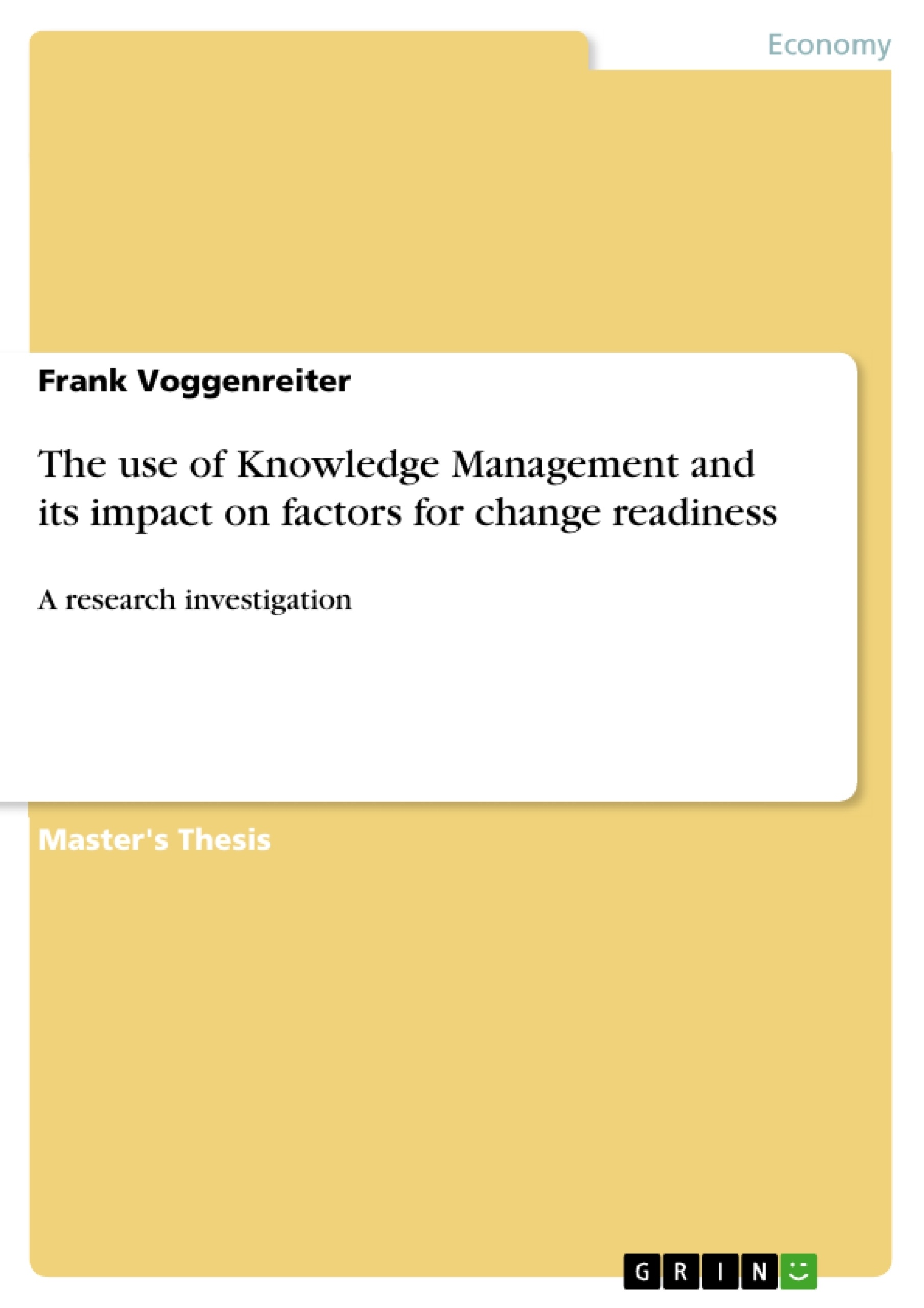The dissertation aimed at the identification of change readiness factors in a German culture and knowledge worker environment and to relate them to Knowledge Management. Knowledge Management was expected to have serious impact possibilities on people’s capabilities to support change and to provide tools to actively influence people’s behaviour and Change Readiness. An online survey has been used to collect quantitative data and provide the foundation for the selection of interview participants. Nine people from two companies and from members of a social network group were selected based on their survey answers, invited to participate in a personal interview and interviewed individually in January 2014. A topic guide and circular asking techniques have been used to allow in-depth insights in peoples’ observation of their Change Readiness factors. More than 9 hours of audio material have been recorded and a quantitative and qualitative analysis of the interviews has been conducted.
Inhaltsverzeichnis (Table of Contents)
- Abstract
- Acknowledgements
- Chapter 1 - Introduction
- 1.1 - Background
- 1.2 - Problem Statement
- 1.3 - Research Questions
- 1.4 - Research Objectives
- 1.5 - Research Methodology
- 1.6 - Outline of the Dissertation
- Chapter 2 - Literature Review
- 2.1 - The Change Management Perspective
- 2.2 - Change Readiness
- 2.3 - The Role of Knowledge Management
- Chapter 3 - Methodology
- 3.1 - Research Design
- 3.2 - Data Collection
- 3.3 - Data Analysis
- Chapter 4 - Results
- 4.1 - Quantitative Data Analysis
- 4.2 - Qualitative Data Analysis
- Chapter 5 - Discussion
- 5.1 - Key Findings
- 5.2 - Implications for Practice
- 5.3 - Limitations of the Study
- Chapter 6 - Conclusion
Zielsetzung und Themenschwerpunkte (Objectives and Key Themes)
This dissertation investigates the relationship between Knowledge Management and change readiness factors in a German cultural context. It explores how effective knowledge management practices can contribute to individual and organizational preparedness for change. The research aims to identify key factors influencing change readiness and analyze their connection to Knowledge Management implementation.
- The impact of Knowledge Management on change readiness factors
- The role of information, understanding, and perceived capabilities in shaping individual decisions about change
- The importance of clear communication and transparency in fostering organizational change readiness
- The influence of cultural factors on the adoption of Knowledge Management practices
- Practical implications for improving change readiness through effective Knowledge Management strategies
Zusammenfassung der Kapitel (Chapter Summaries)
Chapter 1 provides an introduction to the research, outlining the background, problem statement, research questions, objectives, methodology, and dissertation structure. Chapter 2 conducts a comprehensive literature review, exploring the concepts of change management, change readiness, and the role of Knowledge Management in fostering organizational change. Chapter 3 details the research design, data collection methods, and data analysis techniques used in the study. Chapter 4 presents the results of the research, analyzing both quantitative and qualitative data collected through an online survey and personal interviews. Finally, Chapter 5 discusses the key findings, their implications for practice, and limitations of the study.
Schlüsselwörter (Keywords)
This dissertation focuses on the intersection of Knowledge Management, change readiness, and cultural influences in a German workplace context. Key concepts explored include the impact of information and communication on individual decisions regarding change, the role of perceived capabilities in supporting change, and the potential of Knowledge Management to enhance organizational change readiness. The research draws upon empirical data collected through surveys and interviews to provide insights into these topics.
- Citation du texte
- Frank Voggenreiter (Auteur), 2015, The use of Knowledge Management and its impact on factors for change readiness, Munich, GRIN Verlag, https://www.grin.com/document/355601



